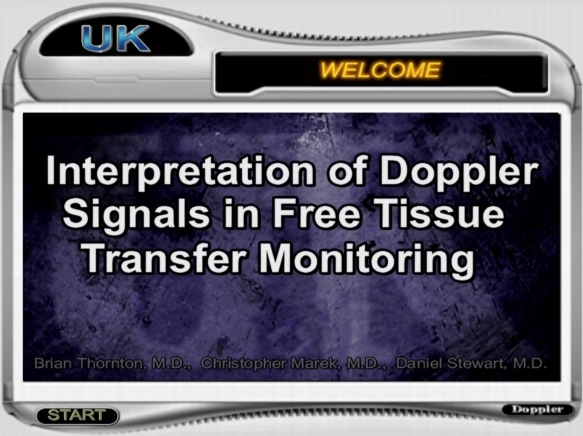8.0: Thursday, March 17, 2005
7592
Interpretation of Doppler Signals in Free Tissue Transfer: A Nursing Education Tool
Salvaging a failing free flap depends on the early detection of compromised blood flow and immediate surgical intervention. Hand-held Doppler ultrasonography, combined with clinical observation are proven, inexpensive and reliable techniques for post-operative monitoring. However, nursing personnel my have little or no formal training in free tissue transfer or the use of the Doppler ultrasound for monitoring.
 We have developed a computer based continuing education unit for all nurses involved in postoperative care of free flaps at our institution. The module contains a brief history and understanding of Doppler ultrasonography; an interactive portion that differentiates between arterial and venous signals; and reinforces clinical observations with reference to flap edema, color and temperature. A pre- and post-test was administered to nurses taking part in the continuing education unit and data collected on multiple parameters.
We have developed a computer based continuing education unit for all nurses involved in postoperative care of free flaps at our institution. The module contains a brief history and understanding of Doppler ultrasonography; an interactive portion that differentiates between arterial and venous signals; and reinforces clinical observations with reference to flap edema, color and temperature. A pre- and post-test was administered to nurses taking part in the continuing education unit and data collected on multiple parameters.
Multiple factors contribute to post-operative vascular compromise of free flaps. However, the first step in detection of the failing free flap requires educated and diligent nursing care. As work-hour restrictions further limit the amount of hospital time residents can spend in-house, relying on well-trained nursing staff for free flap monitoring becomes even more critical. The module will be made available for free download.
